Florida Residents Discover 16-Foot Monster Taking Over Their Property
A homeowner was outside his property when he spotted a creature underneath his home. He described the animal as a “predator” with a dark brown, scaly back over 16 feet in length. Later, other residents filed a report to the South Florida Water Management District. Officials quickly set out to capture and relocate the mysterious creature.
After arriving at the property, the authorities realized that they were facing off against something much more deadly than they had originally thought. Was it a crocodile? An alligator? A snake? Read on to discover the story of the 16-foot monster, how it got into Florida, and what the officials made of it.
1. An Unexpected Call
According to an official report, two men were camping on an island where they claim to have seen a large creature roaming near a local resident’s house. They also claim that they tried to get the predator off the resident’s porch, but without success.
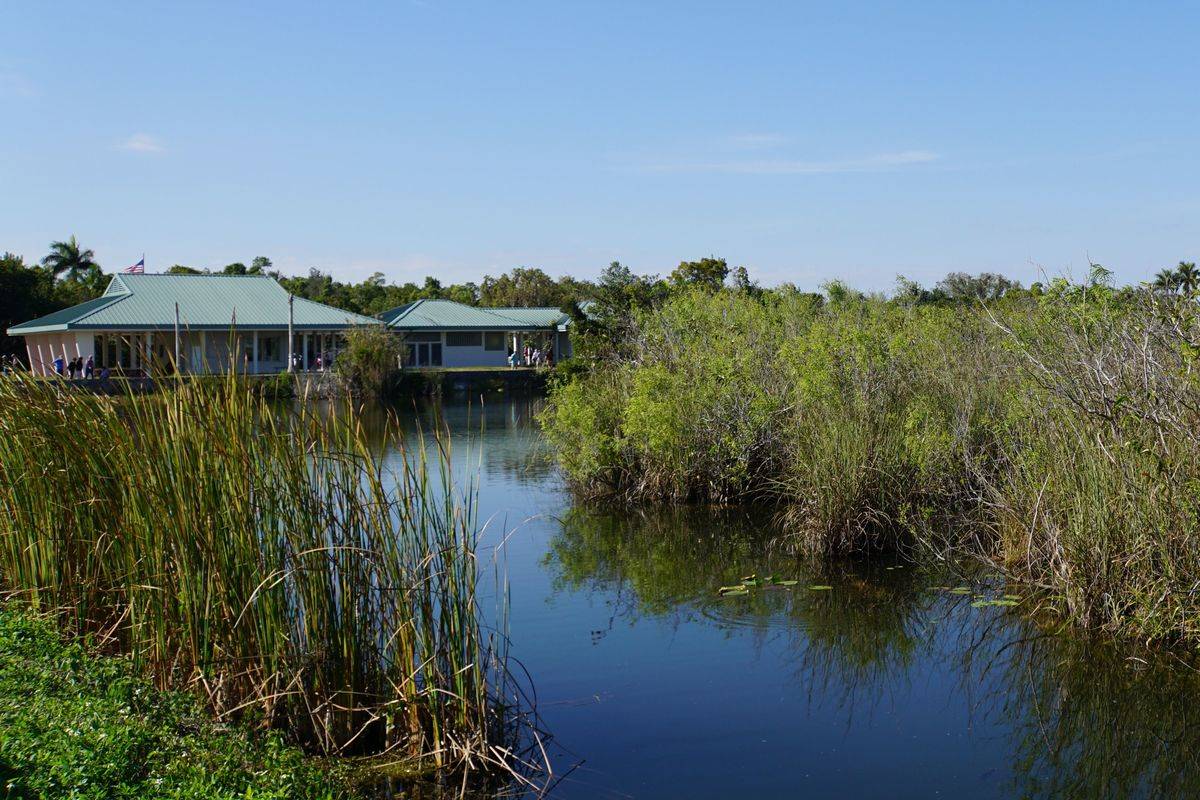
LEILA MACOR/AFP via Getty Images
After realizing the 16-foot-long creature was too big to handle on their own, the men contacted the South Florida Water Management District. Ron Bergeron of the District responded to the call. He called for a backup team to help capture the 165-pound predator.
2. Could The Creature Have Come From Allegator Alley?
Alligator Alley is a stretch of the I-75 Interstate Highway which runs between Naples and Fort Lauderdale. Spanning 80 miles, it cuts through the Everglades, home to creatures large and small. It officially opened in 1968 when construction was completed on the roadway after years of labor.

Paul Rovere/Getty Images
The alley is part of a route that many tourists and locals use to get into Miami Beach. It cuts through the Everglades, home to over 200,000 alligators. While this may sound like a lot of alligators, there’s no guarantee that you’ll see one if you decide to visit. Besides alligators, the area is also home to other kinds of wildlife.
3. The Alligator Hypothesis
An alligator might be a reasonable guess for what they’d found under the house, but in reality, the chance of it being an alligator was slim. Female alligators only tend to grow up to a maximum of 10 feet, while males can grow as long as 13 feet. Alligators are not usually involved in human conflicts, but when they are, it’s rarely serious.

Jeffrey Greenberg/Universal Images Group via Getty Images
For residents, alligators are nothing more than giant lizards. They are in fact an essential part of the Everglades’ ecosystem, playing an important role in building peat for another turtle species. When the dry season approaches, their holes are little havens for other wildlife.
4. Home of Big Cats and Big Crocs
Besides alligators, the Everglades has a complex and diverse ecosystem where several plant and animal species live. It is a natural habitat for hundreds of types of birds, including white and glossy ibises, crocodiles, manatees, and snakes.
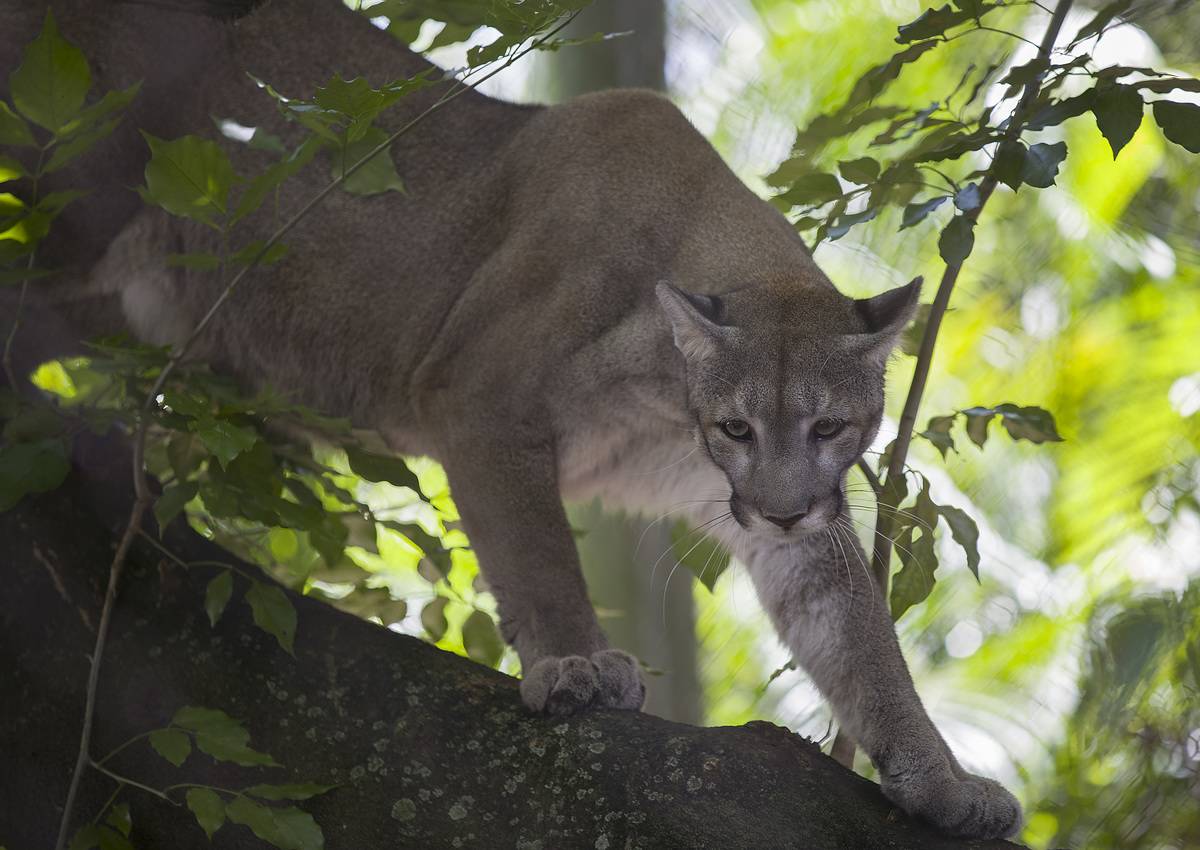
Joe Raedle/Getty Images
You might also witness a rare Florida panther stalking about in the Everglades. Although their numbers are dwindling, there are no recorded cases of a human being attacked by a Florida panther. Our two campers definitely didn’t think they were dealing with a big cat. Just what were they dealing with?
5. Could It Have Been a Black Bear?
Bears, especially Black Bears, might fit the description. Although you’d most often see them in forested sloughs and oak scrubs, black bears do exist in the Everglades. These bears can weigh between 300 and 500 pounds. Their claws are long and sharp, which they use when digging for food and climbing trees. They eat both meat and vegetables.
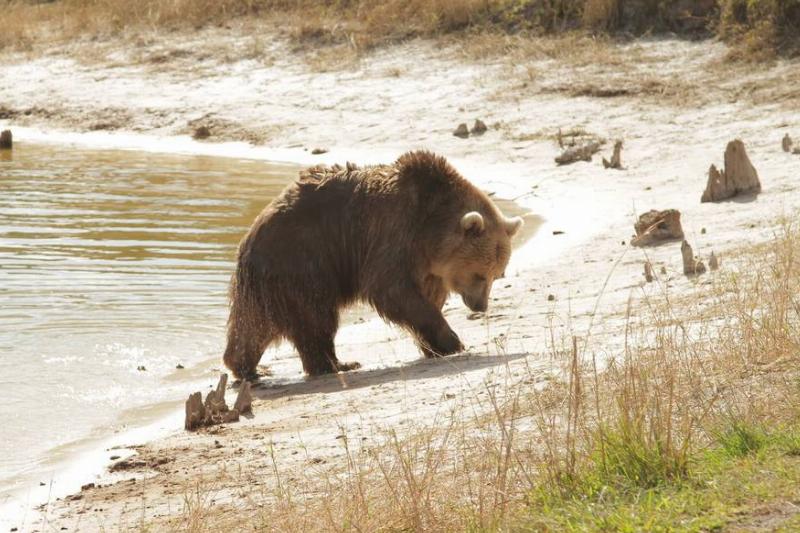
Rodrigo Gomez/Barcroft Media via Getty Images
Black bears live in protected wildlife areas, and while roaming they tend to avoid humans. While it’s rare for a bear to attack people in Florida, there have been cases of tourists being hurt when bears felt threatened. However, there have been no recorded cases of bears ever wandering onto the property of an Everglades homeowner.
6. Manatees, Maybe?
Manatees are the last type of animal living in the Everglades large enough to be mistaken as the lurking predator. Although manatees are huge, they are incredibly gentle creatures. They are large aquatic mammals that are often referred to as “sea cows”.
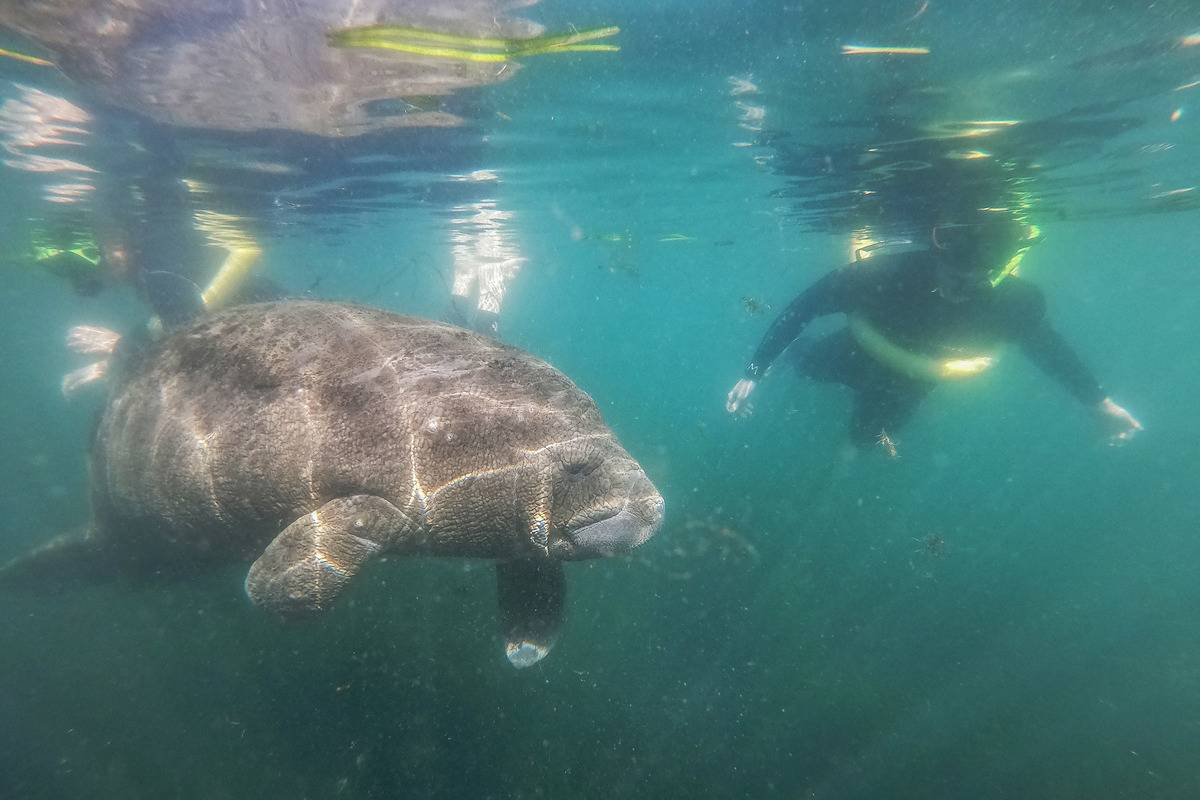
Paul Rovere/Getty Images
An adult manatee can grow up to ten feet long and weigh between 1,500 – 1,800 pounds, feeding on marine vegetation. They have thick, wrinkled skin of a grayish-brown color, while our suspect has a scaly and dark brown back. So if it’s not a manatee, what on Earth is it?
7. The Creature Was An Invasive Species
Officials were concerned that the creature could be an invasive species that didn’t belong in Florida. This type of animal could have posed a threat to the Everglades ecosystem and its wildlife. That’s why Ron Bergeron acted as quickly as he did when he received the call.
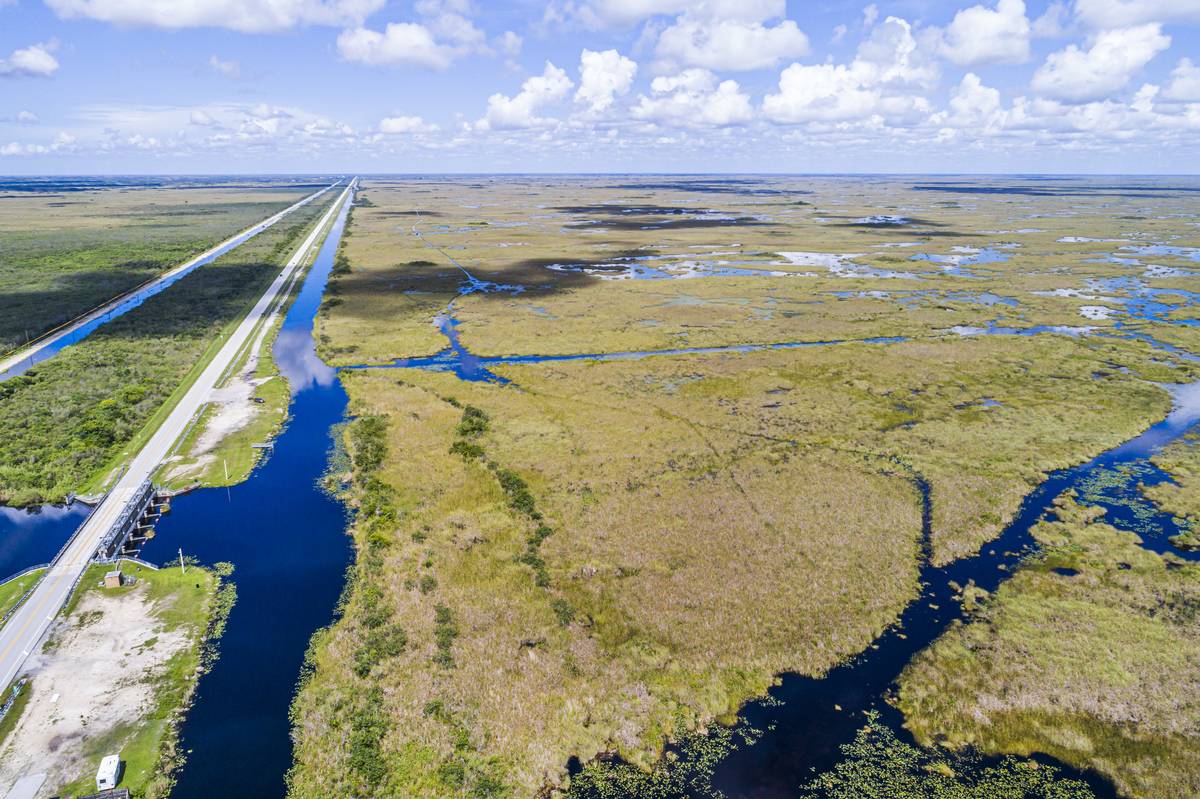
Jeffrey Greenberg/Education Images/Universal Images Group via Getty Images
Invasive species are largely responsible for the decreasing populations of birds such as egrets, spoonbills, and herons in the Everglades, as well as raccoons, rabbits, possums, and other animals over the last few years. Now’s your last chance to guess. What kind of creature are we dealing with here?
8. Ron Bergeron Discovered Something Unexpected
Arriving on the scene, Bergeron, Brian Van Landingham, and Frank Branca confirmed that the creature found in Broward County really was an invasive species. It seemed to have come from far, far away. The creature was a native of Southeast Asia. Quite the traveler, indeed.

Alligator Ron Bergeron/YouTube
This creature, dark brown or black with a blotchy back, can be found near marshes and swamps. They usually live in water but sometimes live on land or under houses. Though Ron and the team were in total awe, they had a job to do. They began extracting the creature from under the house…
9. The Creature Comes to Light
After a careful extraction, Ron and his team found that they’d pulled a 16-foot Burmese python out from under the porch space, weighing 165 pounds in total. The creature measured one foot less than the largest snake found in Florida. They noted that it was a female and that she had been guarding a nest.

Alligator Ron Bergeron/YouTube
Just look at her! Female pythons are known to be slightly longer than males. They also tend to be heavier and bulkier. They can usually be found in swamps, grasslands, and woodlands. However, this Burmese python found the Everglades to be a great place to settle down and breed.
10. With Kids in Tow
Burmese Pythons are usually gentle and won’t attack without good reason. However, a python mother can be defensive, but she will usually settle down with some gentle handling. That’s the idea Bergeron and his team went with while dealing with his python and her eggs.
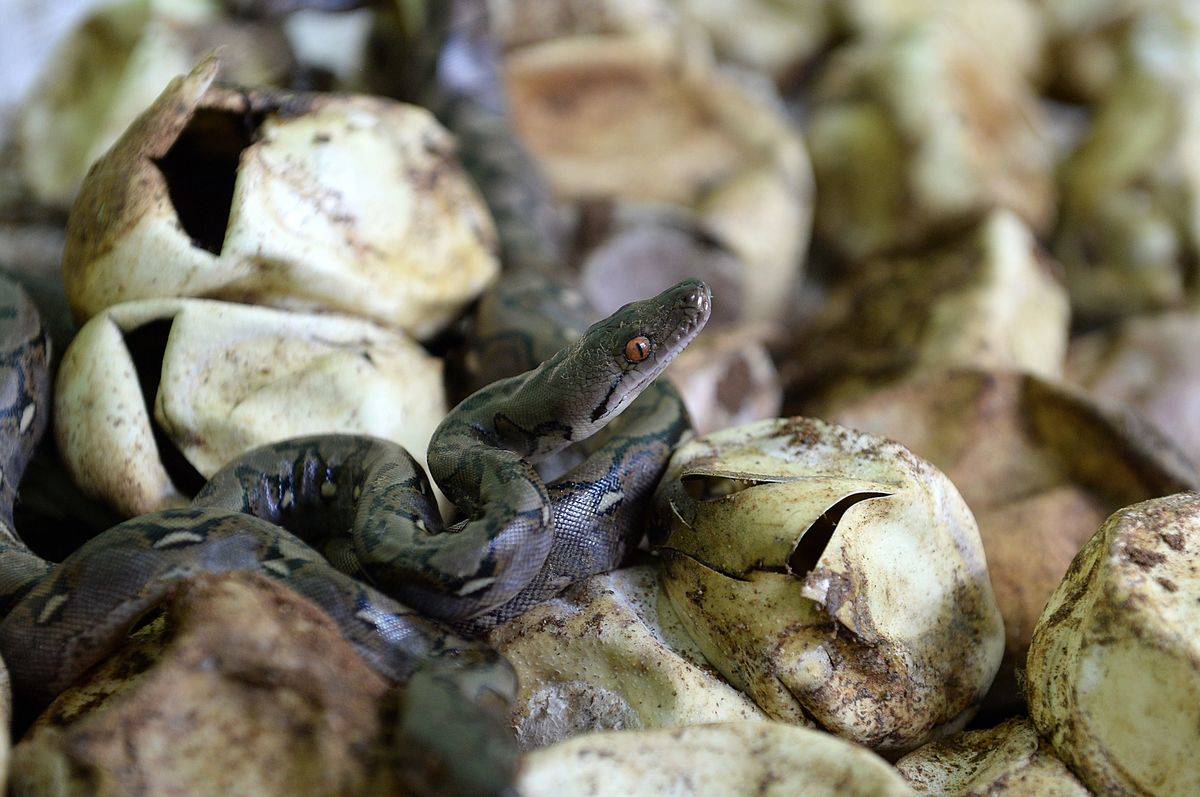
ARUN SANKAR/AFP via Getty Images
Burmese Pythons are known for laying large numbers of eggs, between 50-100, which can quickly turn any ecosystem into a python paradise. Yikes! Fortunately, the campers found only around 50 in total. It would have been a much bigger problem if the eggs had all hatched under the residents’ noses, that’s for sure.
11. Some Eggs Have Already Hatched
By the time Bergeron and his team had arrived, some of the python eggs had already begun hatching. They captured a handful of the hatchlings emerging from the eggs, with sizes ranging from 10 to 16 inches each. If the team hadn’t come right there and then, another generation of pythons would have been left free to roam.
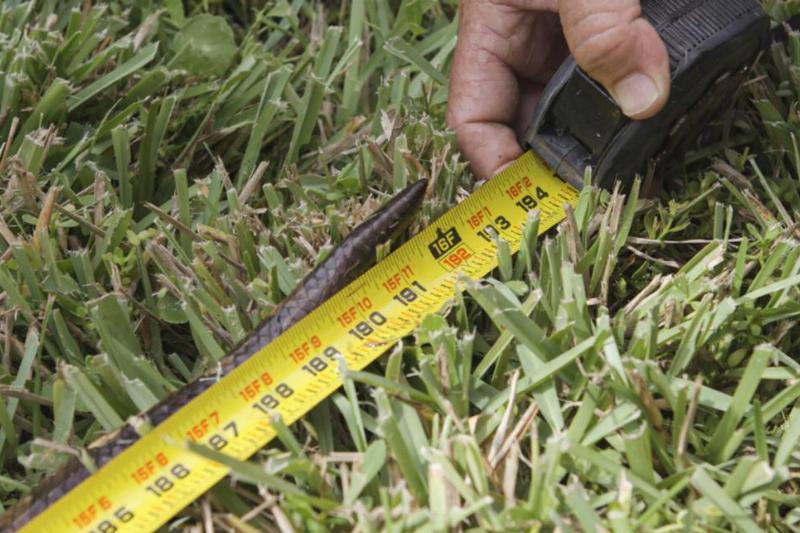
Alligator Ron Bergeron/YouTube
But newborn pythons stay inside their eggs until they’re ready to shed their first skin. Soon after, they go hunting for their first meal, eating small rodents, shrews, and birds in the wild. They eat roughly once every week or two but can feast more often if the opportunity presents itself.
12. A Threat To Food Chain
“The Burmese Python poses a significant threat to the Florida Everglades by disrupting the natural food chain,” Bergeron said. Pythons had already been reproducing quickly and had started to eat the animals already living in the Everglades.
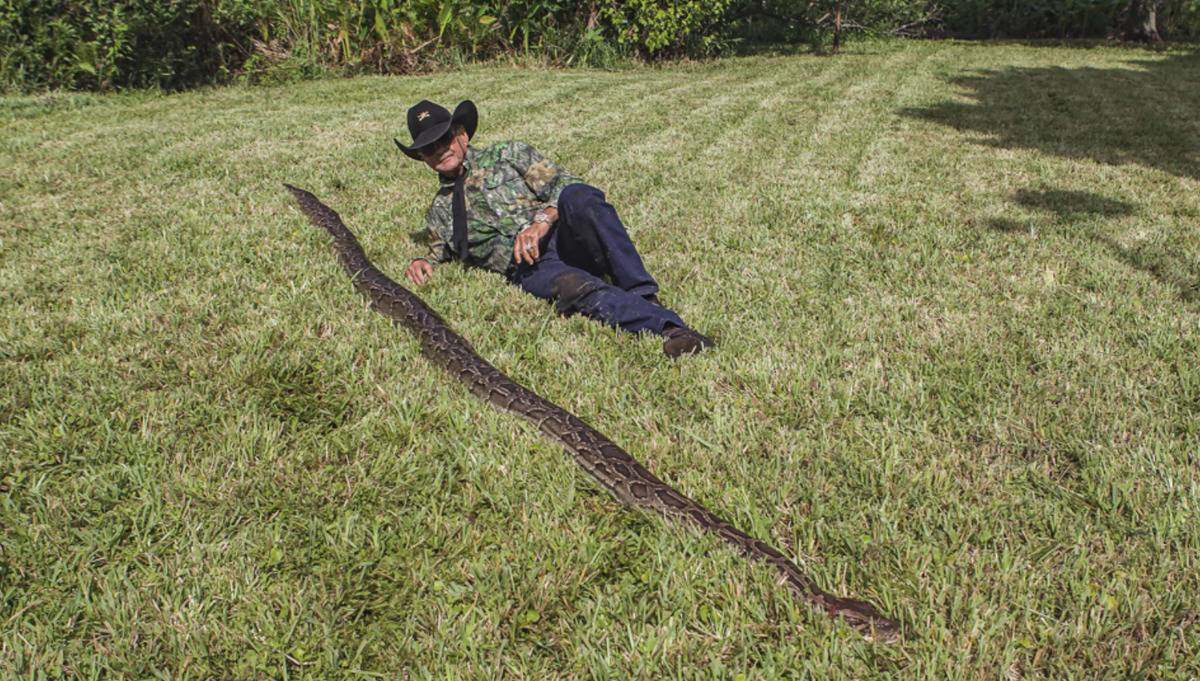
Alligator Ron Bergeron/YouTube
It was pleasing for Bergeron and his team to discover the 50 newborn snakes. Not only would the newborns have gone on to become an enormous threat to the local food chain, but they would have also gone on to harass Florida’s human residents too.
13. Importance of Catching A Female Pythons
Female pythons have a higher value to hunters than males. Dusty Crum, an expert hunter, told the South Florida Sun-Sentinel that he mainly searches for female pythons because their eggs are considered a good catch. According to him, you can halt an entire future generation of snakes by catching one female python.

Fairfax Media via Getty Images
Crum is the star of a Discovery Channel show, Guardians of the Glades, which follows his snake-hunting adventures. He’s an expert in tracking down pythons. He took part in the 2013 Python Challenge in Florida.
14. How Did a Burmese Python End Up in Florida?
By the 1980s, the Everglades swamps of South Florida had been taken over by one of the region’s most destructive invasive species: the Burmese python. But how did these Southeast Asian natives end up there? Well, enthusiastic snake owners all over the United States had been importing them for years due to their beautiful patterns and colors.
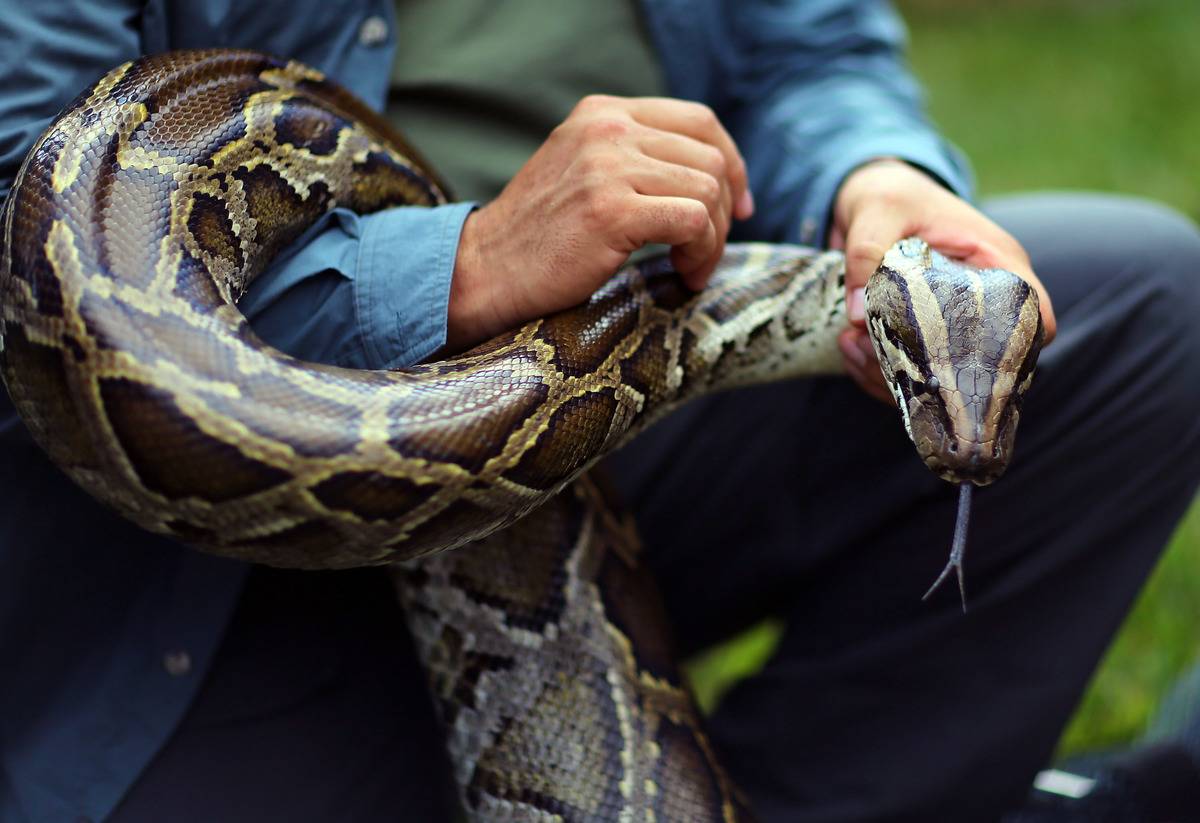
Joe Raedle/Getty Images
The sudden, boom and bust success of this exotic pet in Miami resulted in thousands of Burmese snakes being released into the wild, where they reproduced and spread across many regions of Florida. Many pythons in the Everglades are believed to be descendants of the snakes which escaped after Hurricane Andrew destroyed a breeding facility in 1992.
15. Burmese Python Eat Much Wildlife
Even though the Burmese pythons arrived in South Florida only a few decades ago, they’ve already devastated the mammal populations there, severely threatening biodiversity. According to experts, the populations of opossums, raccoons, and bobcats in the Everglades dropped 87.5 percent in 2012 alone.
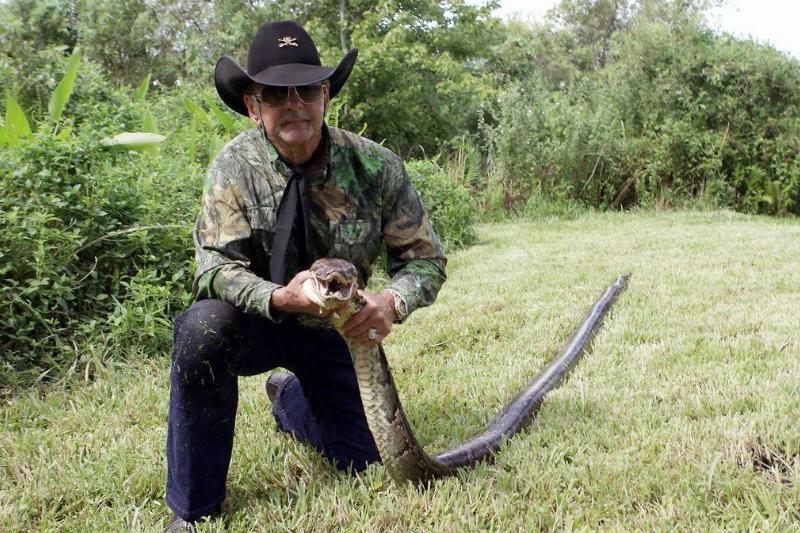
Alligator Ron Bergeron/YouTube
Meanwhile, the populations of cottontail rabbits, marsh rabbits, and foxes decreased dramatically as well. Around 77 percent have died from the python’s deadly squeeze. Even deers and wading birds have been found inside the bodies of dead Burmese pythons.
16. They Can Even Swallow Other Large Predators
Not only do pythons eat small mammals and birds—such as rats, rabbits, opossums, armadillos, squirrels, and other rodents—they also consume large reptiles and mammals. Pythons aren’t picky eaters. One swallowed a whole alligator in Florida. Yes, it’s possible, thanks to the python’s sit-and-wait hunting style.
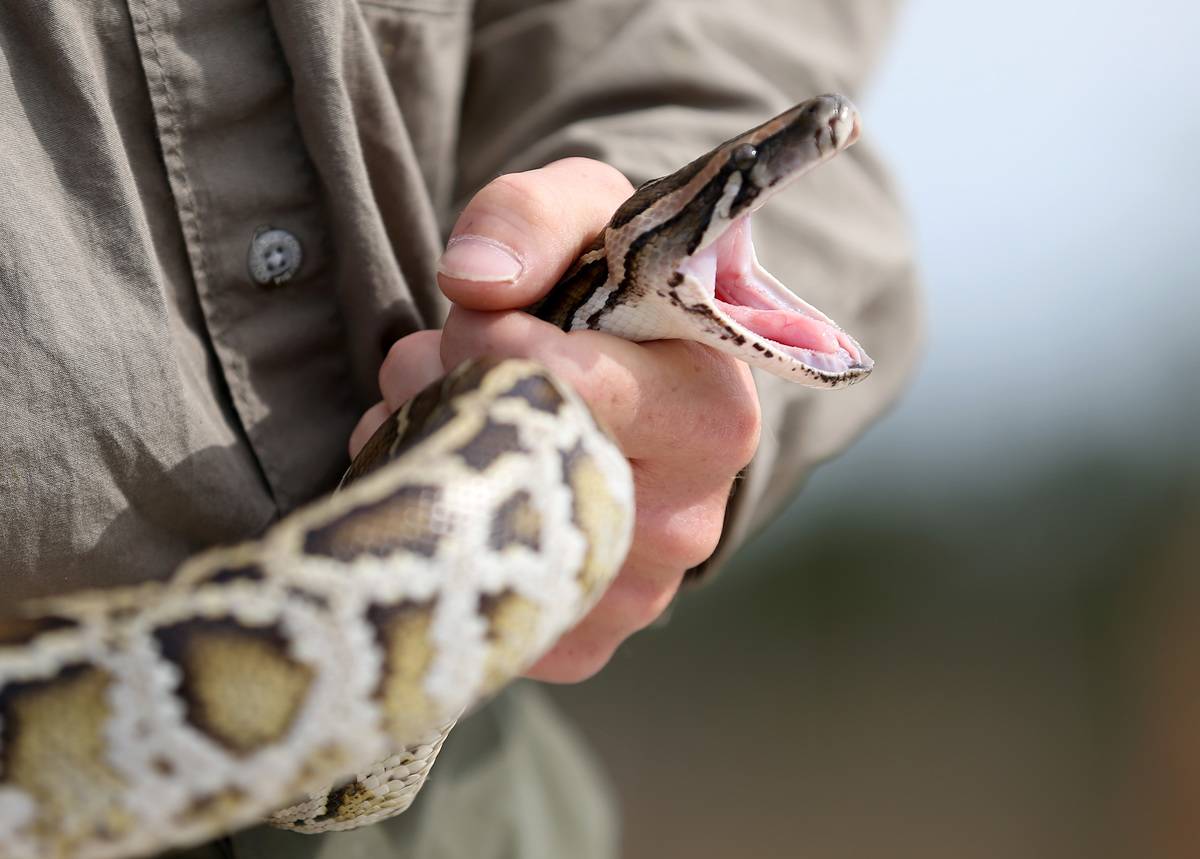
Joe Raedle/Getty Images
Pythons, unlike most humans, can open their mouths a staggering 150 degrees. As they consume food, their stomachs undergo an acidity level increase. The higher acid levels cause their intestines to grow in size, allowing for digestion.
17. Expert Swamp Swimmers
The best swimmer in the python family is the Burmese python. This snake often hunts its prey in bodies of water, but it is difficult to see a python swimming while it hunts. Some pythons can stay underwater for up to thirty minutes.
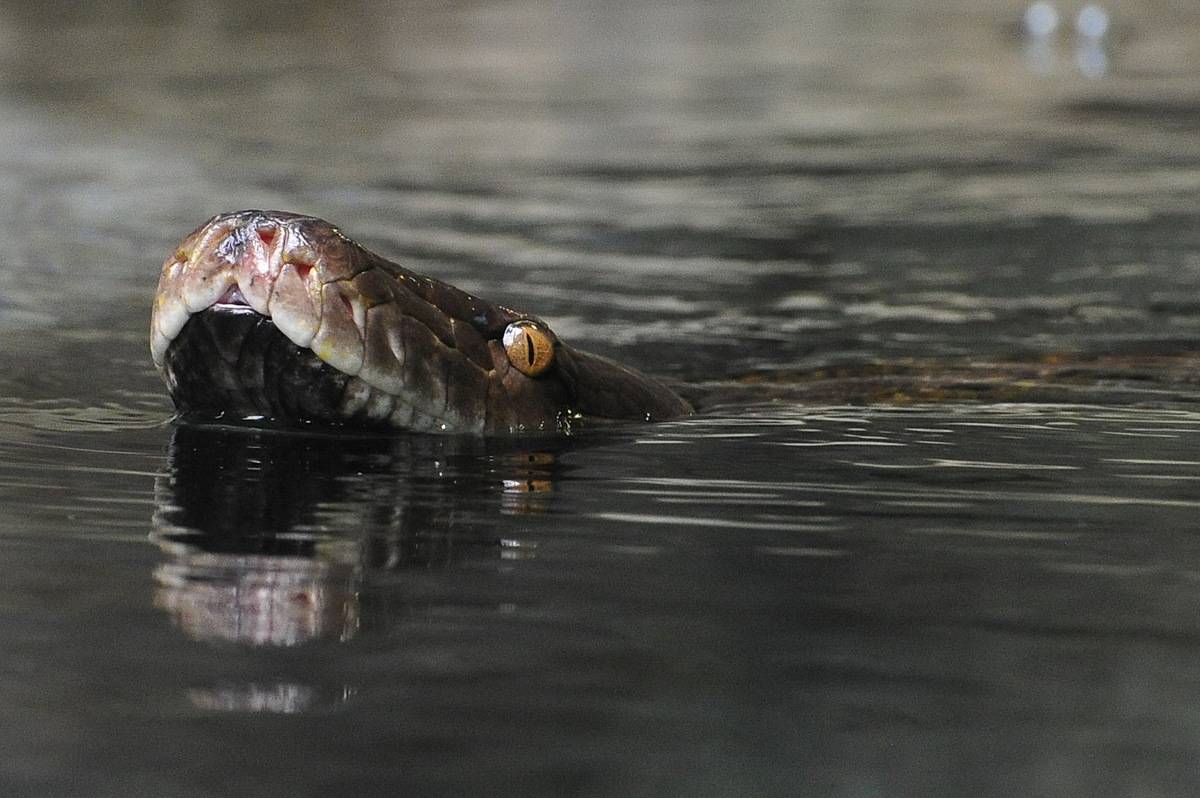
Brinckmann/ullstein bild via Getty Images
Most pythons live outside the swamps of South Florida. However, scientists discovered that they thrive there in the saltwater mangroves of the Everglades, proving them to be highly adaptable creatures.
18. How a Burmese Python Attacks Its Prey
Pythons have a similar diet to other snakes. They both eat birds, mammals, amphibians, and reptiles. They sit still and wait for prey to come by. Then they initiate a biting attack on their opponent, following it with a deadly constriction that squeezes their prey to death.
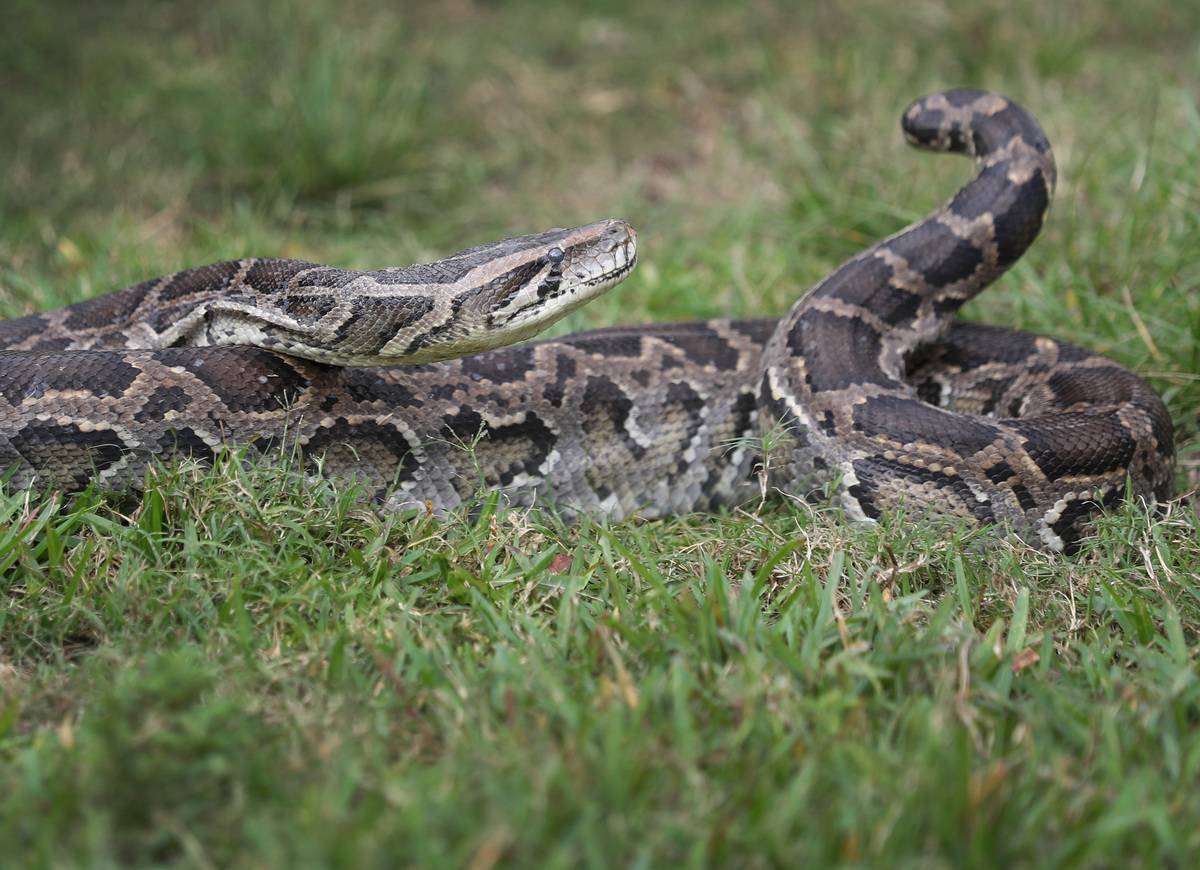
Joe Raedle/Getty Images
Burmese pythons eat almost any type of food they encounter, hungry or not. As a result, almost all dead pythons found in the wild are obese due to their tendency to overeat.
19. It Traveled Far To Get To The Everglades
Ron Bergeron believed that the Burmese python he found underneath the porch had traveled a long way to get there. They usually make their home around 20 miles south of Broward County. Bergeron believed that the snake made its way to the Everglades to find shelter, to incubate her eggs.
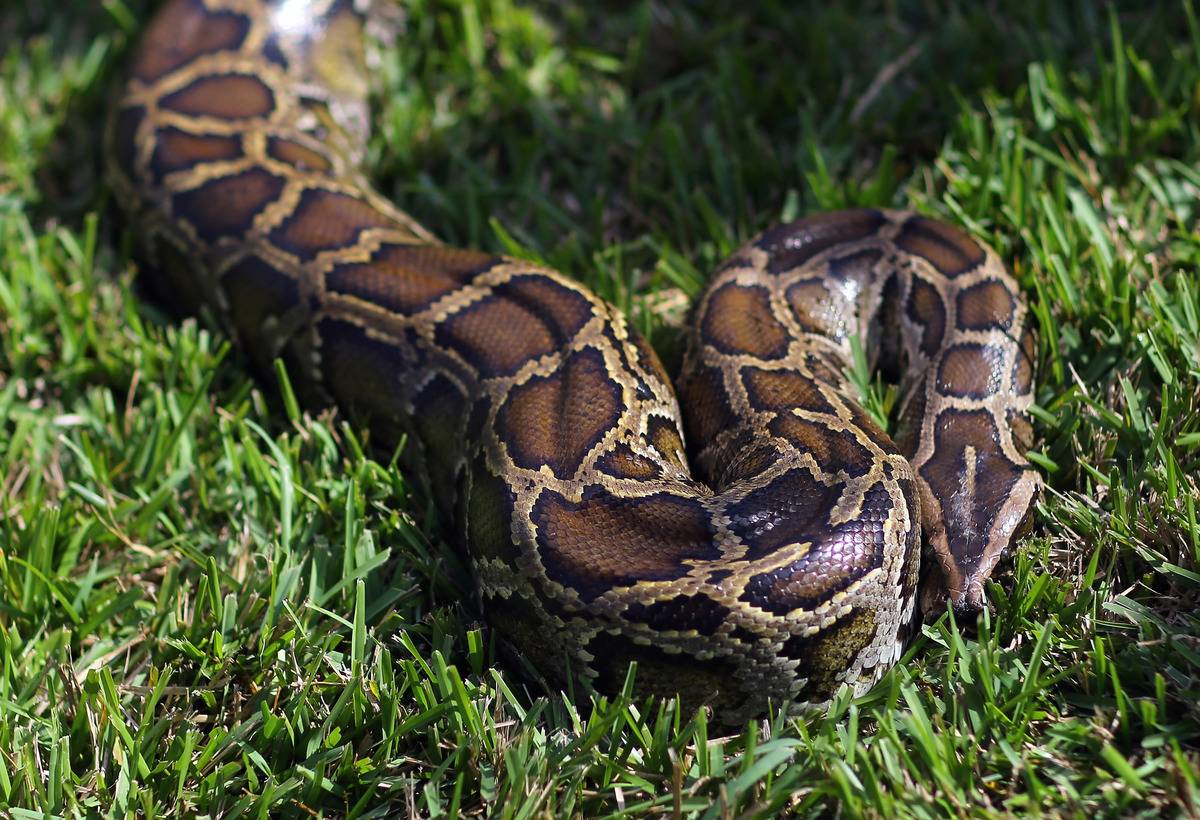
Joe Raedle/Getty Images
If these snakes continue to spread, they will colonize their habitat and consume all the endangered species there. They could cause the extinction of other species too. Now that they’ve become so widespread, it has become hard for hunters to reduce their population.
20. Looking to Settle Down
For years, people in the Everglades reported sightings of Burmese pythons slithering into their homes and basements through windows or drain pipes. After one snake made its way beneath someone’s home, wildlife experts assumed that the snake might have been searching for an ideal breeding area in the region.
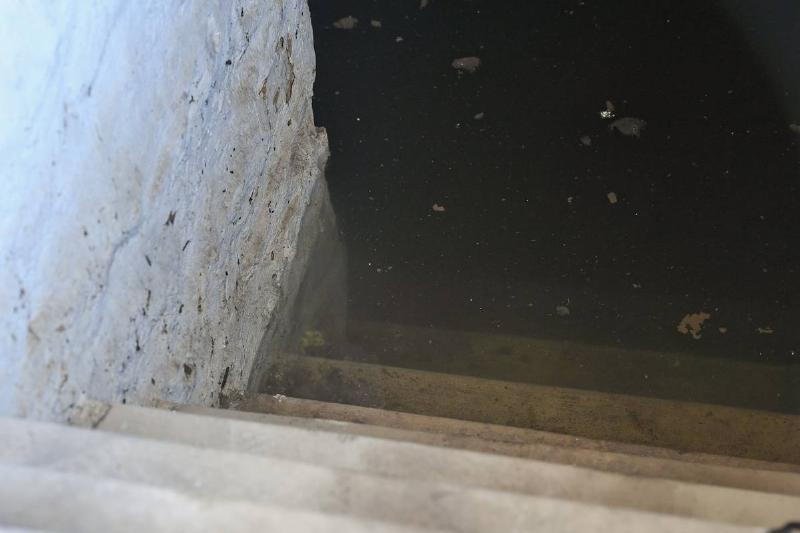
Ben Hasty/MediaNews Group/Reading Eagle via Getty Images
Tom Rahill, a snake hunter who works with the Florida Fish and Wildlife Conservation Commission, said “there are some really hot locations that are ideal [for] habitat breeding.” However, since these places are far from the cabin in our story, Ron’s pythons might just have run out of time, settling for a spot underneath the resident’s house to lay her eggs.
21. It’s Not The First Time
This 16-foot python isn’t the first of its kind. In 2013, a 14-foot python was discovered near the Everglades. It was captured by Bobby Hill of the South Florida Water Management District while digesting three adult deer. In that same year, researchers found another 16-foot, 140-pound Burmese python in the marshlands.

Alligator Ron Bergeron/YouTube
Researchers believe there are between 100,000 and 300,000 pythons in the Everglades. In their native habitats, they can grow up to a staggering 23 feet long, though they mostly stay between 15 and 20 feet. A fully grown 26-foot Burmese python was once captured in Malaysia, for example.
22. There Are Thousands of Them Left In The Wild
Between 2013 and 2017, over 2,000 pythons were removed by hunters. In 2020, 5,000 were captured. Though thousands of pythons have been caught so far, there are still thousands left out there. The Florida Fish and Wildlife Conservation Commission is scaling up python removal efforts.
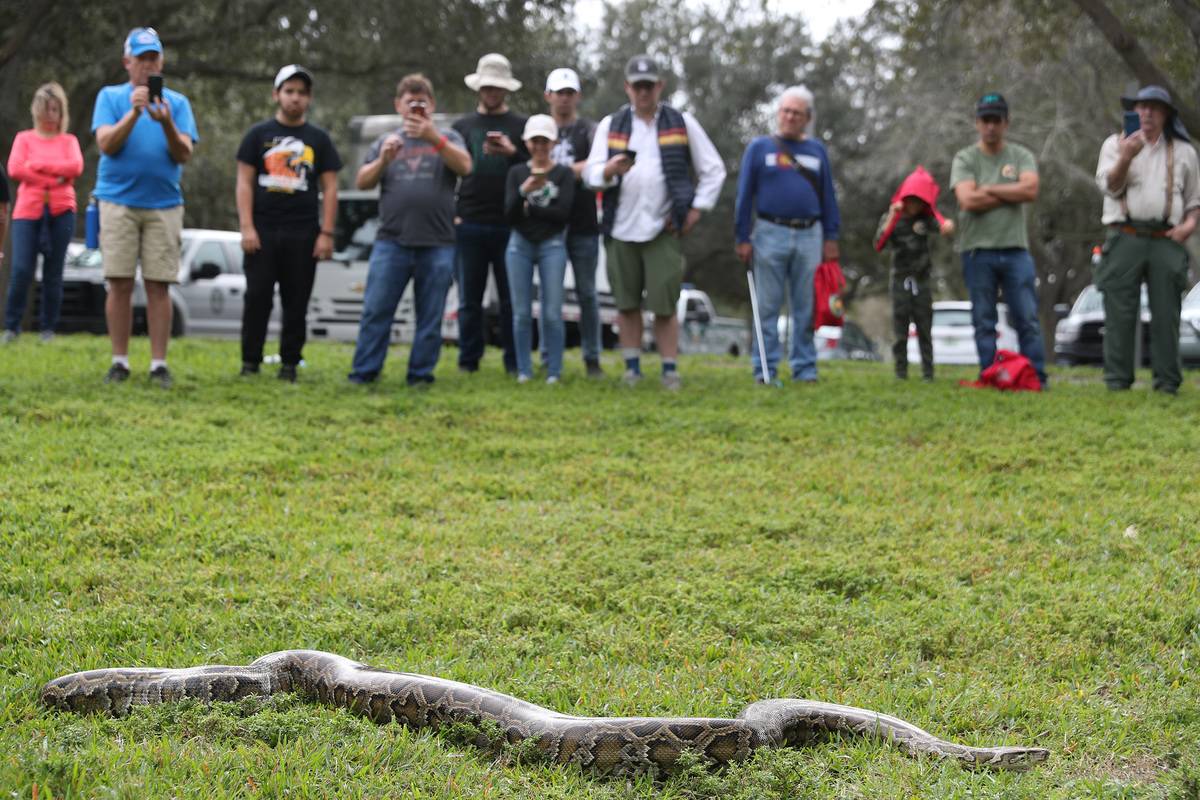
Joe Raedle/Getty Images
The thought of that many pythons out there slithering through the Everglades with dozens of eggs filling their bellies is unsettling. Their presence continues to be one of the biggest threats to the Everglades’ ecosystem besides human activity.
23. Animals That Can Kill Burmese Python
Pythons still have predators of their own. Young pythons may be preyed on and eaten by various birds, hyenas, frogs, wild dogs, and even other species of snakes. Even having grown much larger, fully grown pythons are still at risk from panthers, leopards, and even lions.
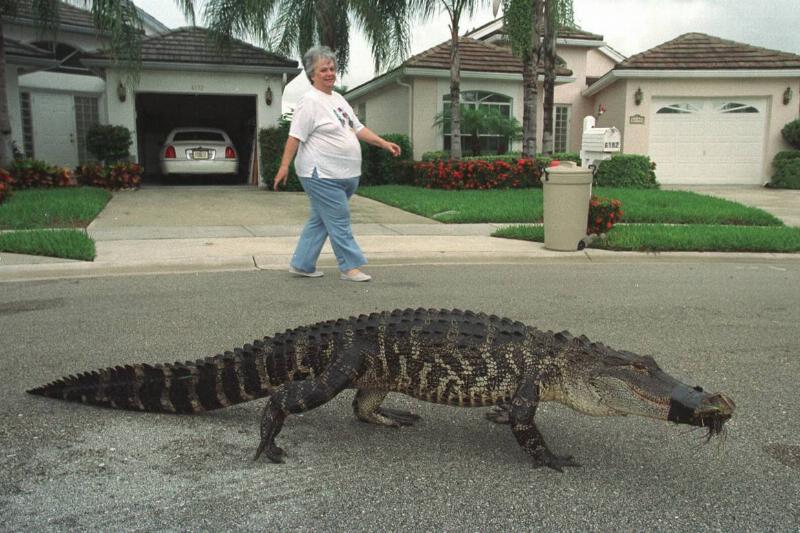
Robert King/Newsmakers
Some wild American alligators have been seen fighting off the invasive Burmese pythons. However, most of them are not large enough to kill the creature, resulting in the alligator being eaten themselves. Hence humans are left as the most effective way to combat their spread.
24. The State Pays Hunters to Combat Invasive Pythons
As pythons have become an increasing threat to Florida’s wildlife, the state has made it illegal to keep Burmese pythons as pets. By 2017, the Florida Wildlife Commission and South Florida Water Management District launched a program offering a monetary reward to people who can catch Burmese pythons in South Florida.
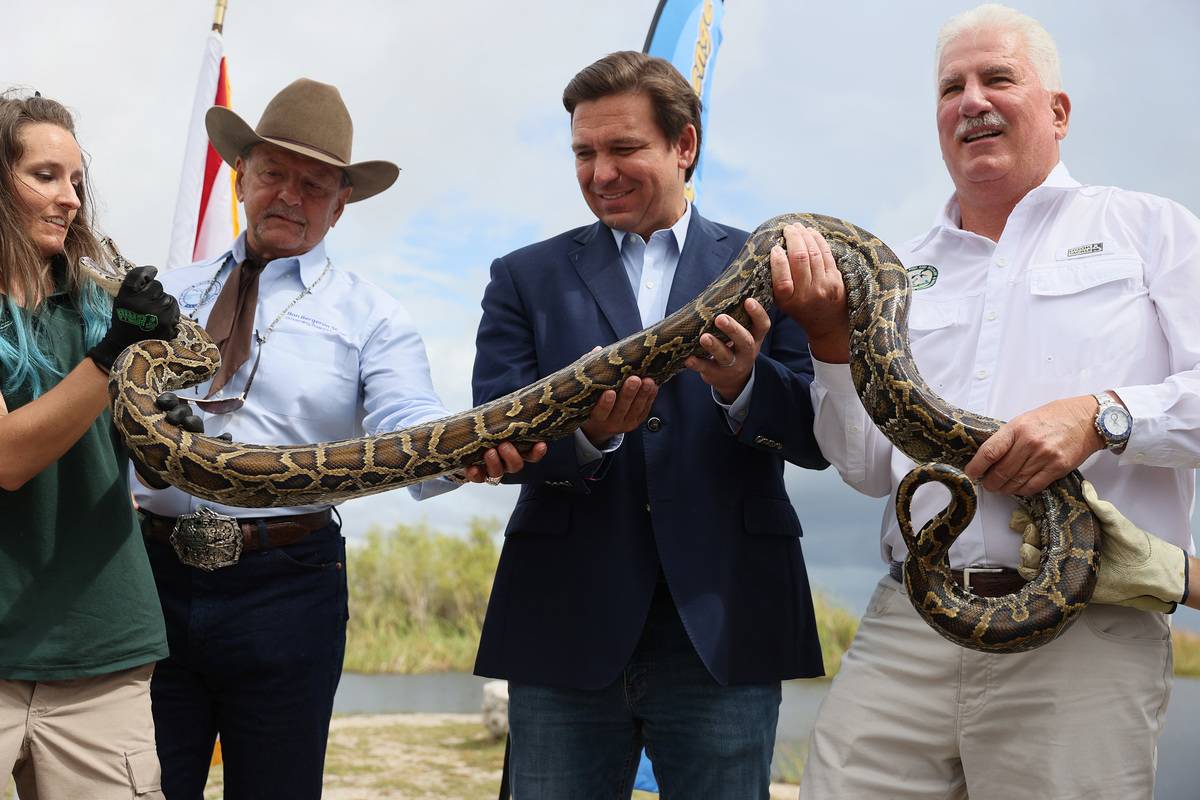
Joe Raedle/Getty Images
The python elimination program has thus far removed almost 5,000 pythons from the wild. Half of these snakes were female—which as we mentioned, are capable of laying 50-100 eggs per year. The program is also looking for new methods, including employing canine detection and introducing genetic warfare.
25. How Much Do Hunters Earn Hunting Pythons?
State Governor Ron DeSantis announced that they would raise the budget on the program, almost triple previous funding. All in all, the program’s budget will grow to $750,000, which will be used to cover all costs associated with the eradication of the invasive Burmese python.
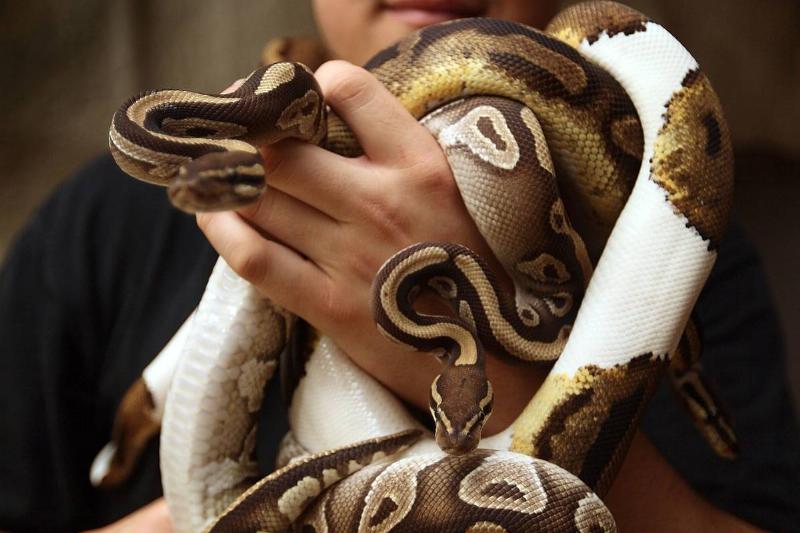
Joe Raedle/Getty Images
Fancy yourself a hunter of snakes? Hunters work ten hours a day on average. Each python they bring in earns them $50, and for every foot above four feet, they get an additional $25. If the snake is a female, that’s an extra $200 on top.
26. How Hunters Catch Burmese Python
The Python Challenge is an organization that aims to eradicate Burmese pythons in the Florida Everglades. Those who join undergo training on how to catch Burmese pythons. If you want to know how the hunt works, read on, and we’ll run through some of the hunter’s special tricks.
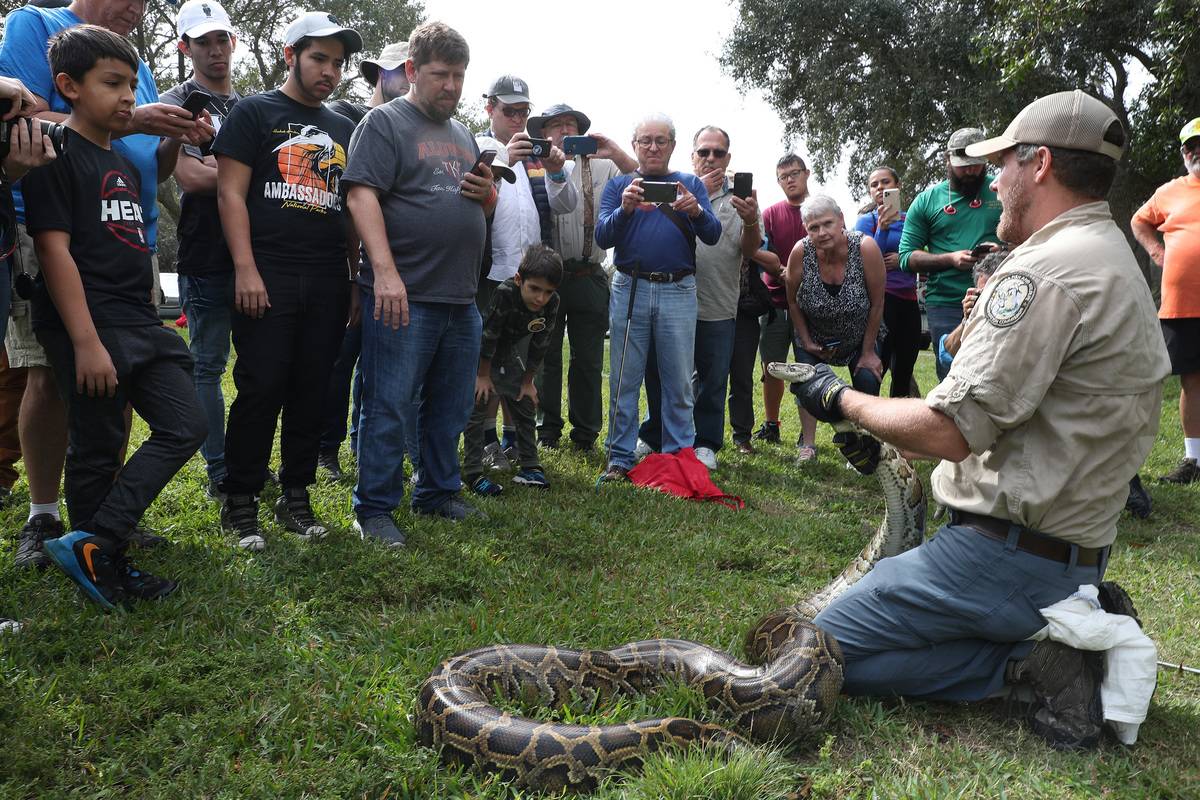
Joe Raedle/Getty Images
The standard method involves pinning a snake’s head down with a pole or stick before gripping it by the neck to prevent bites. While holding the python in one hand, the hunter then places it in a bag. Afterward, Florida Wildlife Commission officers will take them away to be weighed. After that, the python is killed with a bolt gunshot straight to the head.
27. Snake Sport
In an attempt to cut the population of pythons down, state officials have also made hunting pythons a sport. They host the Florida Python Challenge every July, where anyone can compete to capture a Burmese python. During the contest, people have a chance to earn money for each python they capture.
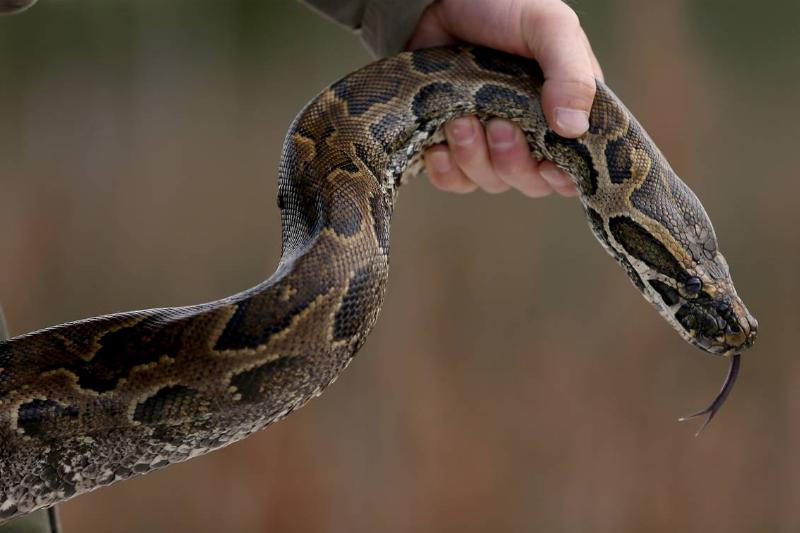
Joe Raedle/Getty Images
In July 2021, more than 600 people took part in the event, which resulted in the capture of 223 Burmese pythons in total. The entrant who caught the longest python won $1,500, while the person who found the most pythons earned $2,500.
28. Extreme Restriction In Florida
Except for banning Burmese pythons as pets, The Florida Fish and Wildlife Conservation Commission also banned the breeding of six other types of pythons, including the green anaconda and nine other “high-risk” reptiles.
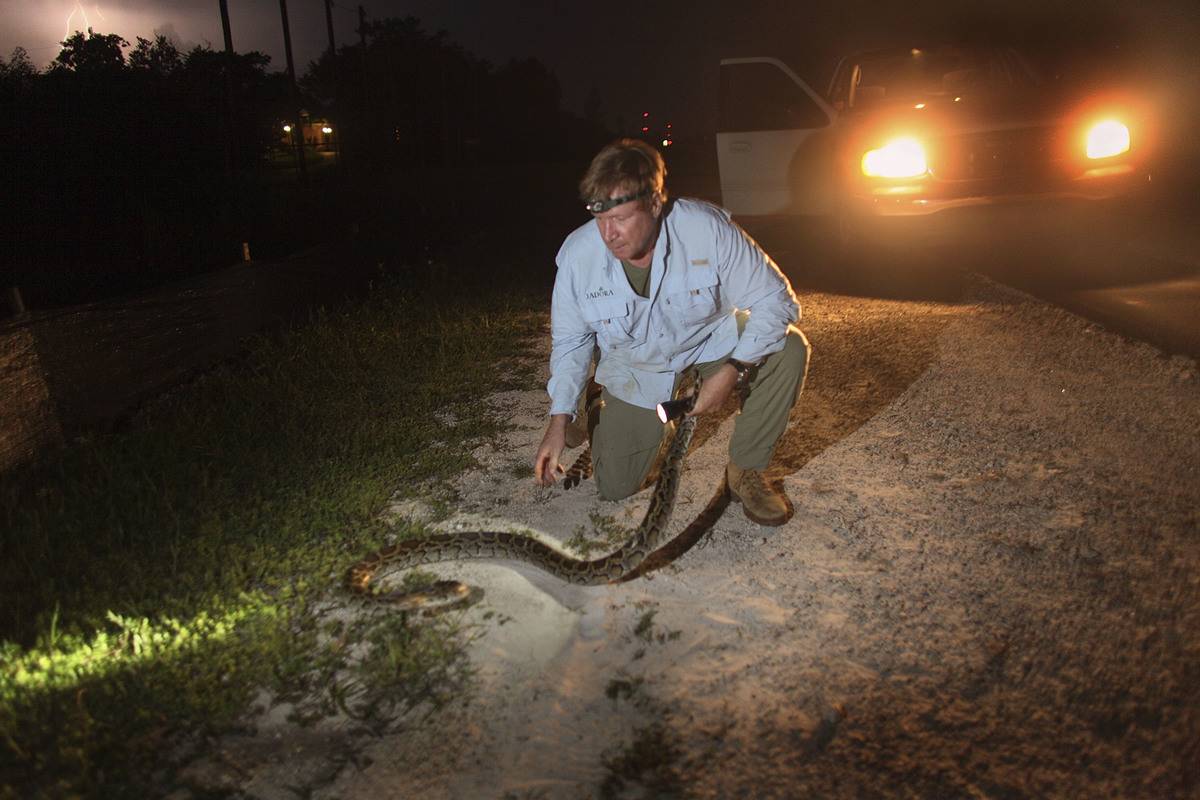
Joe Raedle/Getty Images
Under the new law, the Florida Wildlife Commission will no longer issue permits for the sale of these 16 prohibited reptiles. License holders who meet certain conditions may continue to breed and sell other non-high-risk reptiles.
29. Developing New Strategies
While recent efforts have focused on capturing the largest Burmese pythons, Auburn University researchers are considering using dogs to sniff pythons out in the wild. They discovered that their dogs could find younger pythons.
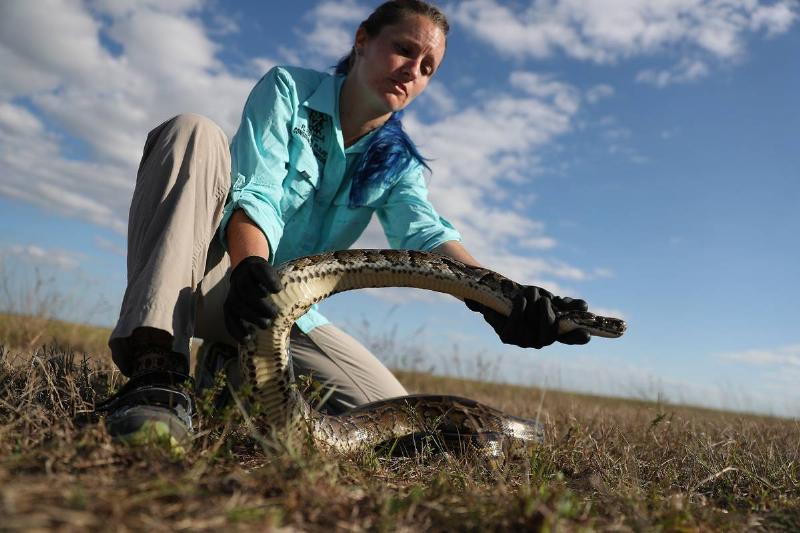
Joe Raedle/Getty Images
On the other hand, some experts have proposed using genetic manipulation technology to cause all future pythons to be born male, reducing egg-laying to zero. However, this technology is still in its infancy.
30. What Happens to Captured Pythons
In case you were wondering what happens to the pythons after hunters kill them, they are usually fed to the animals they have on their property. Others keep them as trophies or sell them on as material to make accessories like purses and shoes.
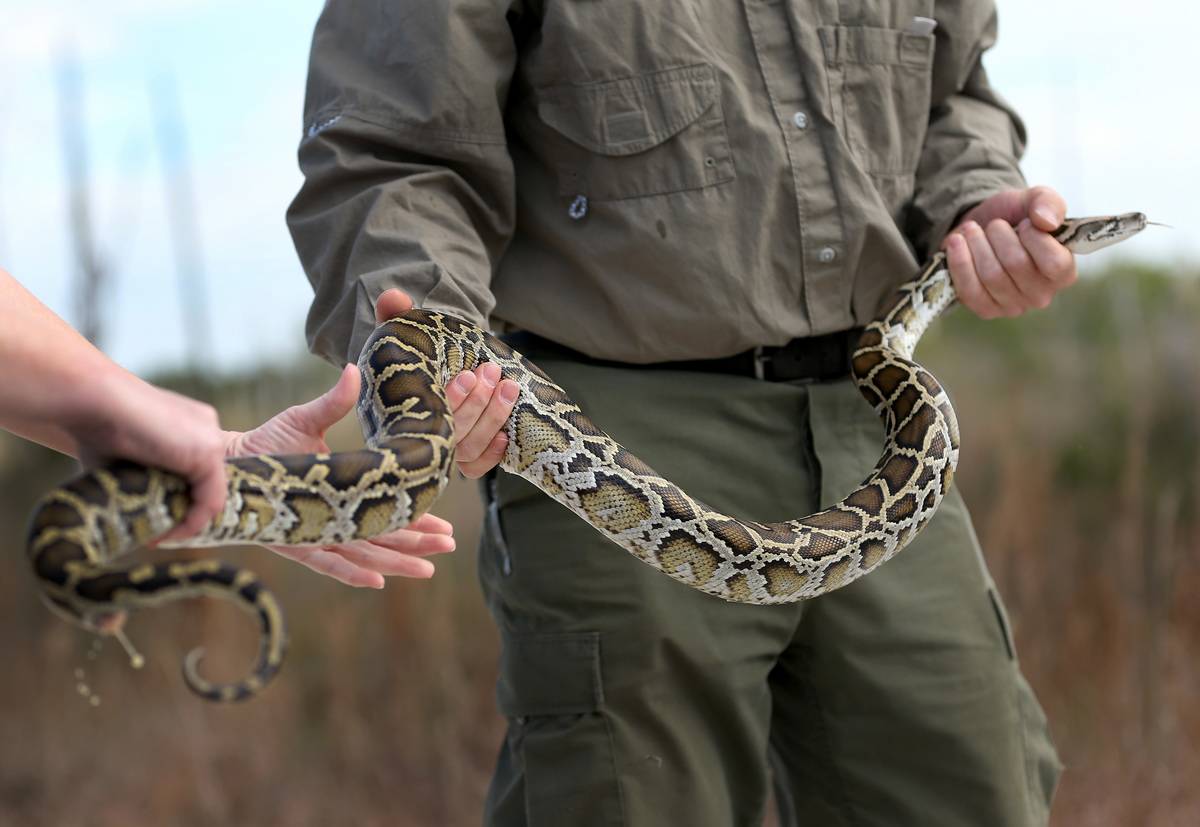
Joe Raedle/Getty Images
One python hunter, Donna Kalil, says she uses a mercury testing kit on the smaller snakes to see if it’s safe to eat. If so, she carves up the white meat, tenderizes it, and cooks it.
